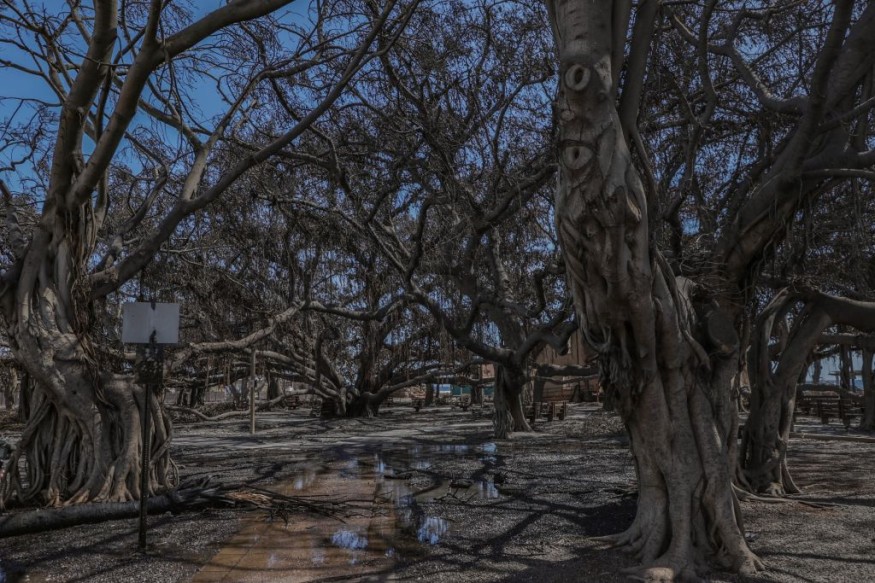
The Lahaina Banyan Tree may be a traumatized burn victim of the Maui Wildfire, but an arborist claimed that it is still breathing and could possibly grow some buds from its branches, although not right away.
Traumatized Maui Wildfire Burn Victim
The devastation caused by the tragic Maui wildfires has a silver lining in that a historic banyan tree, a beloved landmark with a 150-year history in Lahaina, was left scorched but miraculously still surviving.
Josh Green, the governor of Hawaii, stated that despite the tree not producing as much sap as usual, it is "still breathing" and soaking up water.
Later, Green made a comparison between the banyan tree and traumatized burn victims.
The tree was reportedly planted on April 24, 1873, to mark the 50th anniversary of the first Protestant mission of the town, according to the Lahaina Restoration Foundation. The tree, which is now more than 60 feet tall, has now taken center stage on the courthouse square in the center of Lahaina.
Lahaina Banyan Tree
According to the organization, the Lahaina Banyan Tree has developed into a valuable resource throughout time. It's a terrific spot to unwind, to start. After a long day of touring and shopping, there are several benches strewn under the spacious canopy for people to rest their weary feet. Popular for capturing pictures. The background is made intriguing by the long, wavy branches and stringy roots.
Eman Nobel says that her children grew up in Lahaina Town and sat beneath the banyan tree and that it "meant everything" to her family. Eman Nobel travels to Lahaina every summer with her extended family of 14.
Will Bloom in Time
Green was informed by an arborist on Sunday that even if a tree has dead branches, it would still attempt to produce new growth and buds where the dead branches would fall off.
The tree, according to Annelise Cochran, a resident of Maui who assisted neighbors escape the fires by diving into the ocean to stay alive.
It will take a very, very long time before everything seems normal, she remarked, but the roots are so deep here. It appears that the human population's branches have been severely scorched.
Nature's Way
Some trees have the ability to survive even if their above-ground growth was destroyed in the event of a wildfire. Species that recover from wildfire by resprouting typically have a complex root structure. Underground protection for dormant buds and nutrient reserves in the root system enables rapid sprouting after a fire.
The chemical, biological, and physical properties of the soils used by western-montane forests as well as the cycling of nutrients are all impacted by wildfire, according to earlier studies. Some nutrients are made more readily available by the burning of soil organic matter and litter, while others are volatilized.
Additionally, cation exchange capacity, aggregate stability, macro pore space, organic chelation, infiltration, and soil microbes are all impacted by soil organic matter loss. When planning prescribed burning programs or during wildfire recovery, replenishing nitrogen must be prioritized.
Related Article : Acre-Wide Lahaina Banyan Tree Under Survey For Possible Revival After Deadly Maui Wildfire
© 2025 NatureWorldNews.com All rights reserved. Do not reproduce without permission.





